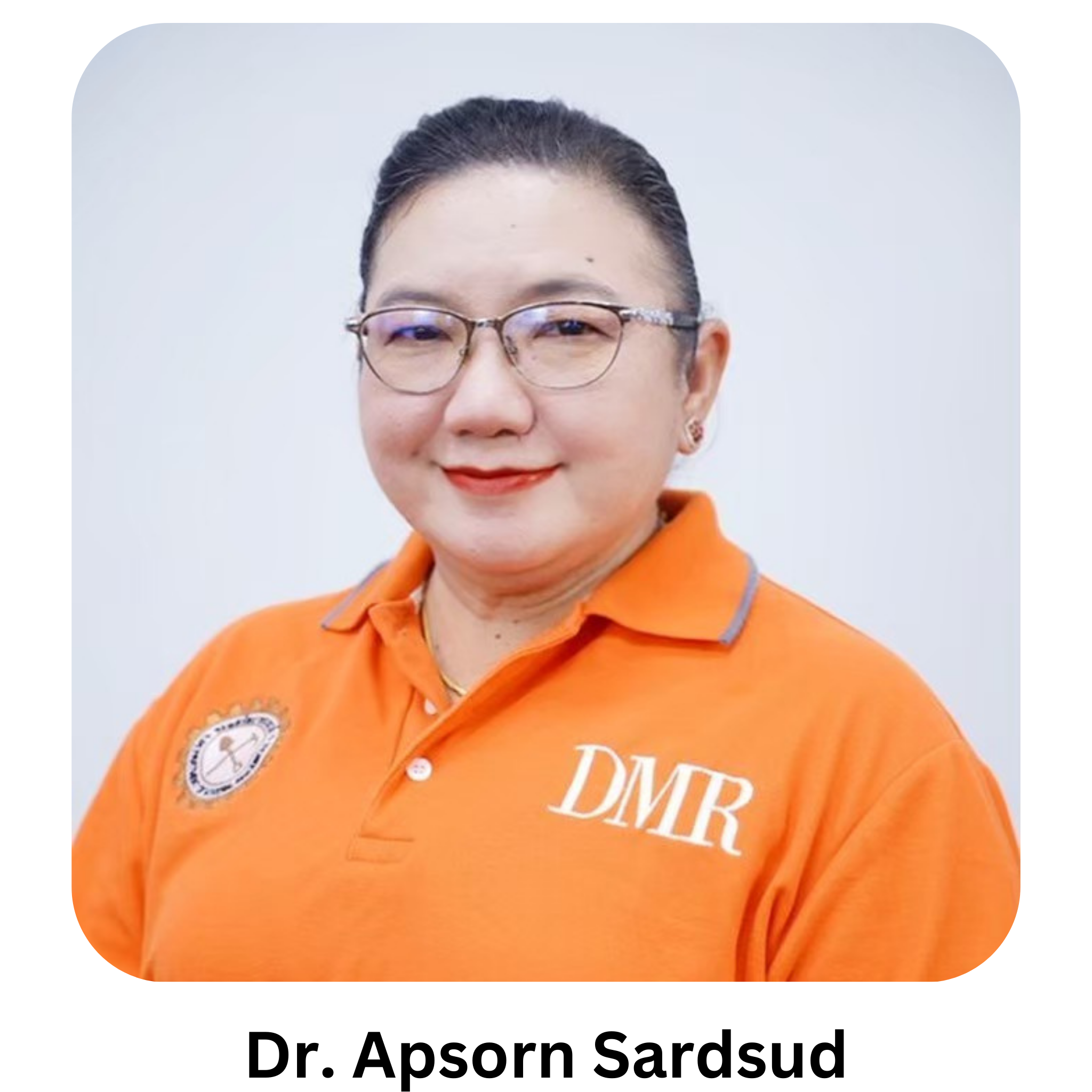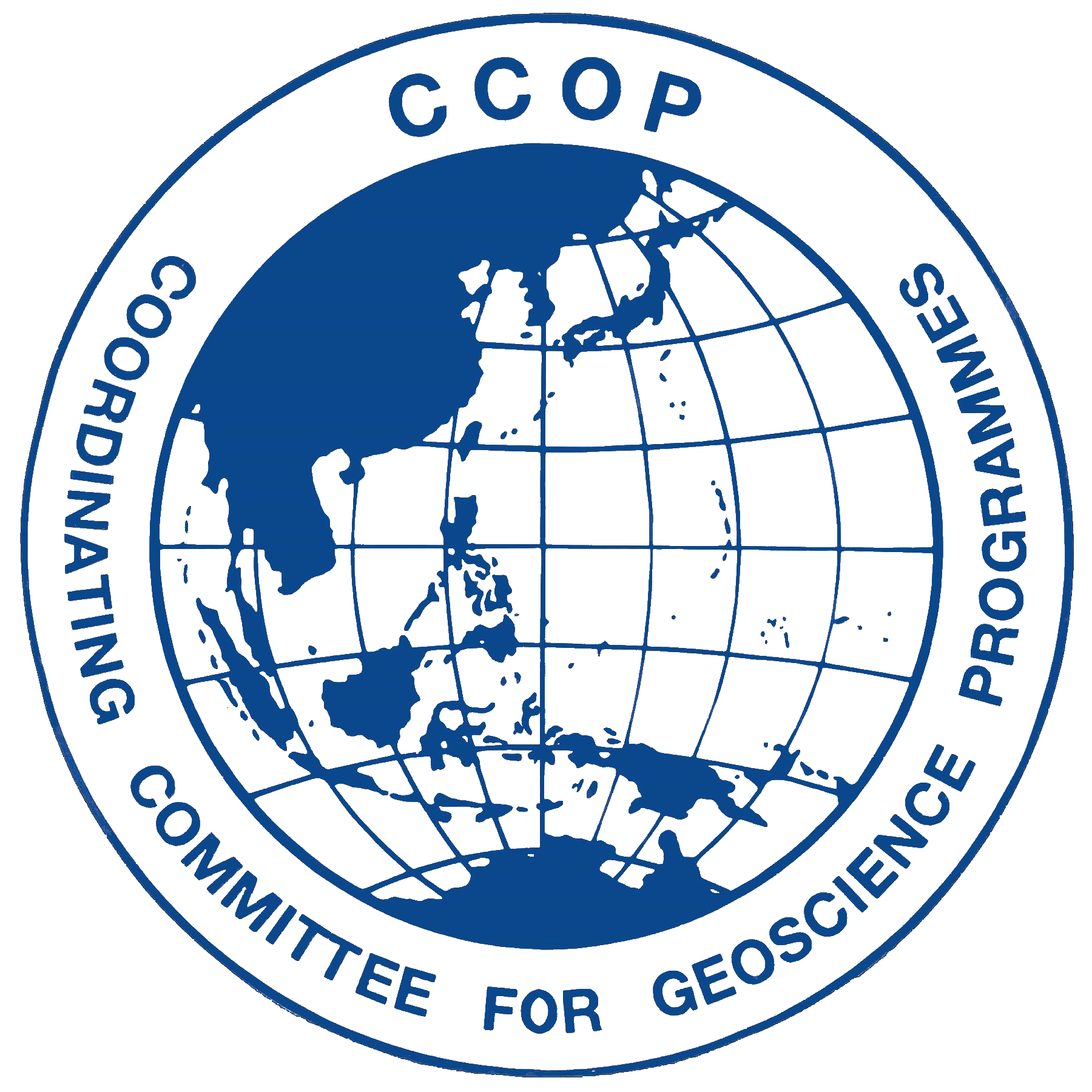REE and Th potential from placer deposits: a reconnaissance study of monazite and xenotime from Jerai pluton, Kedah, Malaysia
Keywords:
Jerai, Kedah, monazite, REE, thorium, xenotimeAbstract
Thorium (Th), rare earth elements (REE), yttrium (Y) and scandium (Sc) are among crucial elements in minerals that have a very high worldwide demand for green energy generation and high technology manufacturing industries. The current principal ore minerals for these elements are monazite, bastnäsite and xenotime. A reconnaissance study on monazite and xenotime minerals was conducted in southern part of Jerai peak area, which consists of mostly pegmatites and granite bedrocks and alluvial plains. Heavy mineral concentrate samples were obtained from various origins including gravelly layer from stream banks, flowing stream beds and seasonal stream beds for recent fluvial environment. Samples were also taken from weathered bedrocks of pegmatites and granites and different subsurface profiles from 12 pits dug in the alluvial plain area. Monazite and xenotime contents from stream bed samples are higher (8.43% and 6.05%) compared to other origins in recent fluvial environment and higher in weathered pegmatites (13.70% and 1.45%) compared to weathered granites. The monazite and xenotime content are also higher in eastern side of the alluvial plain, up to 3.16% and 2.91% respectively, but lower than samples from recent fluvial environment. The Th, REE and Y contents are very high up to 1,530 ppm, 21,031 ppm and 7,604 ppm respectively in samples containing monazite and/or xenotime. The Sc content, however, is very low which is up to 87.8 ppm in all samples although it shows positive correlation with monazite and/or xenotime contents. Both REE containing minerals could be economically potential if mined as placer suites together with garnet, tourmaline and other industrially beneficial minerals.
References
Abaka-Wood, G.B., Addai-Mensah, J., & Skinner, W. (2016). Magnetic separation of monazite from mixed minerals. Chemeca.
Abdul Rahman, A.H., Sibon, M., & Hasan, M.S. (2018a). Reconnaissance study on thorium element from monazite source in southern Kedah. Putrajaya, Malaysia: Department of Mineral and Geoscience Malaysia.
Abdul Rahman, A.H., Sibon, M., & Hasan, M.S. (2018b). Reconnaissance study on rare earth elements in southern Kedah. Putrajaya, Malaysia: Department of Mineral and Geoscience Malaysia.
Allen, J. (2000). In support of trade: Coastal site location and environmental transformation in early historical period Malaysia and Thailand. Bulletin Indo Pacific Prehistory Association, 20, 62–78.
ASM (2014). Blueprint for the establishment of rare earth-based industries in Malaysia: summary for policy maker. Kuala Lumpur, Malaysia: Akademi Sains Malaysia.
Bea, F. (1996). Residence of REE, Y, Th and U in granites and crustal protoliths; Implications for the chemistry of crustal melts. Journal of Petrology, 37(3), 521–552. doi: 10.1093/petrology/37.6.1601.
Bea, F., Pereira, M.D., Corretge, L.G., & Fershtater, G.B. (1994). Differentiation of strongly peraluminous, perphosphorous granites: The Pedrobernardo pluton, central Spain. Geochimica et Cosmochimica Acta, 58(12), 2609– 2627. doi: 10.1016/ 0016-7037(94)90132-5.
Bean, J.H., & Hill, J.H. (1969). The iron-ore deposits of West Malaysia, Vol.2. Kuala Lumpur, Malaysia: Geological Survey of Malaysia.
Bradford, E.F. (1972). The geology and mineral resources of the Gunung Jerai area, Kedah. District Memoir 13. Kuala Lumpur, Malaysia: Geological Survey of Malaysia.
Casillas, R., Nagy, G., Panto´, G., Bra¨ndle, J., & Fo´rizs, I. (1995). Occurrence of Th, U, Y, Zr, and REE- bearing accessory minerals in late Variscan granitic rocks from the Sierra de Guadarrama (Spain). European Journal of Mineralogy, 7(4), 989– 1006.
Castor, S.B., & Hedrick, J.B. (2006). Rare earth elements. In J.E. Kogel, N.C. Trivedi, J.M. Barker, and S.T. Krukowski (Ed.), Industrial minerals and rocks—commodities, markets, and uses (pp.769- 792). Colorado, USA: Society for Mining, Metallurgy, and Exploration, Inc.
Chappell, B.W., & White, A.J.R. (2001). Two contrasting granite types: 25 years later. Australian Journal of Earth Science, 48(4), 489–499. doi: 10.1046/j.1440-0952.2001.00882.x.
Che Harun, H., Ismail, A., Che Wan, R., Sulaiman, Z.A., Ash’ari, M.A., Husin, Z., Abdul Ghani, M.Z., Che Kasim, M.Z., Ismail, Y., Abu Hasan, M., Daril, K., Md Slar, K., Hamzah, A.B., & Zakri, H. (Ed.) (2009). Placer tin exploration guidelines (in Malay). JMG.GP.03. Kuala Lumpur, Malaysia: Department of Mineral and Geoscience Malaysia.
Che Zainol Bahri, C.N.A., Ismail, A.F., Ab Majid, A., Mohd Ruf, M.I.F., & Al-Areqi, W.M. (2018). Extraction and purification of thorium oxide from monazite mineral. Sains Malaysiana, 47(8), 1873– 1882. doi: 10.17576/jsm-2018-4708-28.
Connelly, N.G., & Damhus, T. (2005). Nomenclature of inorganic chemistry: IUPAC recommendations (p. 51). London, England: RSC Publishing.
Cuney, M., & Friedrich, M. (1987). Physicochemical and crystal-chemical controls on accessory mineral paragenesis in granitoids: Implications for uranium metallogenesis. Bulletin Mine´ralogie, 110, 235– 247.
Devismes, P. (1978). Atlas photographique des mineraux d’alluvions. Paris, France: Mem. Bur. Rech. Geol. Minières.
Flinter, B.H., Butler, J.R., & Harral, G.M. (1963). A study of alluvial monazite from Malaya. The American Mineralogist, 48, 1210–1226.
Förster, H-J. (1998a). The chemical composition of REE-Y-Th-U-rich accessory minerals in peraluminous granites of the Erzgebirge-Fichtelgebirge region, Germany. Part I: the monazite-(Ce)-brabantite solid solution series. American Mineralogist, 83, 259–272.
Förster, H-J. (1998b). The chemical composition of REE-Y-Th-U-rich accessory minerals in peraluminous granites of the Erzgebirge-Fichtelgebirge region, Germany. Part II: Xenotime. American Mineralogist, 83, 1302–1315.
Förster, H.-J., & Tischendorf, G. (1994). The western Erzgebirge-Vogtland granites: implications to the Hercynian magmatism in the Erzgebirge-Fichtelgebirge anticlinorium. In R. Seltmann, H. Ka¨mpf, and P. Mo¨ller (Ed.), Metallogeny of collisional orogens (pp. 35-48). Prague, Czech Republic: Czech Geological Survey.
Ghani, A.A., Shahjamal, M., Ng, T.F., Ismail, N.E.H., Mohamad Zulkifley, M.T., Islami, N., Quek, L.Z., Abu Bakar, A.F., Amir Hassan, M.H., Abdul Aziz, J.H., & Masor, A.F. (2019). Ce anomaly in I-type granitic soil from Kuantan, Peninsular Malaysia: Retention of zircon in the weathering product. Sains Malaysiana, 482), 309–315. doi: 10.17576/jsm2019-4802-06.
Gupta C.K., & Krishnamurthy, N. (2005). Extractive metallurgy of the rare earths (p. 484). Florida, USA: CRC Press. Hassan, K. (1990). A summary of the Quaternary geology investigations in Seberang Prai, Pulau Pinang and Kuala Kurau. Geol. Soc. Malaysia Bulletin, 26, 47–53.
Harraz, H.Z. (2013). Topic 7: Placer mineral deposits. A short series lectures, Tanta University. Hinton, R.W., & Paterson, B.A. (1994). Crystallisation history of granitic magma: Evidence from trace element zoning. Mineralogical Magazine, 58A, 416– 417.
Hosking, K.F.G. (1973). The primary tin mineralization patterns of West Malaysia. Geol. Soc. Malaysia Bulletin, 6, 297–308.
IAEA (2005). Thorium fuel cycle – potential benefits and challenges. Report no. IAEA-TECDOC-1450 (p. 90) Vienna, Austria: Author.
Ishihara, S., Sawata, H., Arpornsuwan, S., Busaracome, P., & Bungbrakearti, P. (1979). The magnetite-series and ilmenite-series granitoids and their bearing on tin mineralization, particularly of the Malay Peninsula region. Geol. Soc. Malaysia Bulletin, 11, 103–110.
Jackson, W.D., & Christiansen, G. (1993). International strategic minerals inventory summary report—rareearth oxides: USGS Circular 930-N (p. 68p). Virginia, USA: USGS.
Jamil, A., Ghani, Azman A., Zaw, K., Osman, S., & Quek, L.X. (2016). Origin and tectonic implications of the ~200 Ma, collision-related Jerai Pluton of the Western Granite Belt, Peninsular Malaysia. Journal of Asian Earth Sciences, 127(2016), 32–46. doi: 10.1016/j.jseaes.2016.06.004.
Jha, A.R. (2014). Rare earth materials: Properties and applications. Florida, USA: CRC Press.
JMG (2014). Geological map of Kedah. Kuala Lumpur, Malaysia: Author.
JMG (2019). Mining industries in Malaysia 2018. Putrajaya, Malaysia: Author.
Kim, K., & Jeong, S. (2019). Separation of monazite from placer deposit by magnetic separation. Minerals, 2019(9), 149–160. doi: 10.3390/min903 0149.
Khoo, T.T. (1977). Occurrence and implication of syncplutonic pegmatite dykes in the Gunung Jerai granite, Kedah. Geol. Soc. Malaysia Bulletin, 8, 117– 120.
Khoo T.T. (1996). Geomorphological evolution of the Merbok estuary area and its impact on the early state of Kedah, northwest Peninsular Malaysia. J. SE Asian Earth Sci, 13(3-5), 347–371. doi: 10.1016/07 43-9547(96)00042-6.
Lameiras, F.S., Nunes, E.H.M., & Maria-Leal, J. (2010). Backgrounds for the industrial use of black tourmaline based on Its crystal structure character istics. Ferroelectrics, 377(1), 107–119. doi: 10.10 8000150190802523719.
Liu, L., Hu, R., Zhong, H., Yang, J., Kang, L., Zhang, X., Fu, Y., Mao, W., & Tang, Y. (2020). Petrogenesis of multistage S-type granite from the Malay Peninsula in the Southeast Asian tin belt and their relationship to Tethyan evolution. Gondwana Research, 84, 20–37. doi: 10.1016/j.gr.2020.02.013.
Atomic Energy Licensing Act 1984 (Malaysia).
McLennan, S.M., & Taylor, S.R. (2012). Geology, geochemistry and natural abundances of the rare earth elements. In A.D. Atwood (Ed), The rare earth elements: fundamentals and applications (p. 8). West Sussex, United Kingdom: Wiley.
Mindat (2011). Monazite-(Ce). https://www.mindat.org/ min-2751.html. Accessed 20 January 2021.
Mohd Hasan, M.Z., Zakaria, M.R., Lee, A.K., & Chong, F.S. (1993). Transect 2 radioactive mineral exploration, Peninsular Malaysia. Kuala Lumpur, Malaysia: Geological Survey of Malaysia.
Mohd Hasan, M.Z., Zakaria, M.R., & Ong, W.S. (1995). Transect 1 radioactive mineral exploration, Peninsular Malaysia. Kuala Lumpur, Malaysia: Geological Survey of Malaysia.
Mohd Mokhtar, N.A., & Saidin, M. (2018). The contributions of Lembah Bujang to the iron industry in Malaysia (in Malay). Melayu: Jurnal Antarabangsa Dunia Melayu, 11(2), 182–199.
Ng, S.W.P., Chung, S.L., Robb, L.J., Searle, M.P., Ghani A.A., Whitehouse, M.J., Oliver, G.J.H., Sone, M., Gardiner, N.J., & Roselee, M.H. (2015). Petrogenesis of Malaysian granitoids in the Southeast Asian tin belt: Part 2. U-Pb zircon geochronology and tectonic model. Geological Society of America Bulletin, 127, 1238– 1258. doi:10.1130/B31214.1.
Rapp, R.P., & Watson, E.B. (1986). Monazite solubility and dissolution kinetics: Implications for the thorium and light rare earth chemistry of felsic magmas. Contr. to Mineral. and Petrol., 94, 304-316. doi:10.1007/BF00371439.
Robb, L. (2005). Introduction to ore-forming processes. New Jersey, USA: Blackwell Science Ltd.
Robb, L.J. (2019). The geology of tin deposits with special reference to tin mineralisation in Peninsular Malaysia. Proceedings of the National Tin Conference 2019. Kuala Lumpur: Malaysia: Tin Board.
Rock & Gem (2019). Rietreved from https://www.rock ngem.com/garnet-an-industrial-commodity/#:~:text= Garnet%20Applied%20Benefits&text=The%20petro leum%20industry%20uses%20huge,for%20water%2 0and%20industrial%20liquids.
Sengupta, D., & Van Gosen, B.S. (2016). Chapter 4: Placer-type rare earth element deposits. In P.L. Verplanck, & M.W. Hitzman (Ed.), Rare earth and critical elements in ore deposits. Reviews in Economic Geology (pp. 81–100). Virginia, USA: SEG.
Shepherd, M.S. (1990). Eneabba heavy mineral sand placers. In F.E. Hughes, (Ed.), Geology and mineral deposits of Australia and Papua New Guinea (p.1591). London, United Kingdom: Institute of Mining and Metallurgy.
USGS (2019). Mineral commodity summary 2019. Virginia, USA: Author.
Voncken, J.H.L. (2016). The rare earth elements: An introduction. London, United Kingdom: Springer Nature.
Wan Hassan, W.F. (1989). Some characteristics of the heavy detrital minerals from Peninsular Malaysia. Geology Society of Malaysia Bulletin, 24, 1–12.
Ward, C.D., McArthur, J.M., & Walsh, J.N. (1992). Rare earth element behaviour during evolution and alteration of the Dartmoor granite, SW England. Journal of Petrology, 33(4), 785–815. doi:10.1093 /petrology/33.4.785.
Wark, D.A., & Miller, C.F. (1993). Accessory mineral behaviour during differentiation of a granite suite: Monazite, xenotime, and zircon in the Sweetwater wash pluton, southeastern California, U.S.A. Chemical Geology, 110(3), 49–67. doi: 0009-2541(93)90247-G.
Willbourn, E.S. (1925). A list of minerals found in British Malaya together with a description of their properties, composition, occurrences and uses. Journal of the Malayan Branch of the Royal Asiatic Society, 3(3), 57–100.
Yang, J., Zhou, M., Zhong, H., Williams-Jones, A.E., Liu, L., Zhang, X., Fu, Y., & Mao, W. (2020). Granite-related tin metallogenic events and key controlling factors in Peninsular Malaysia, Southeast Asia: New insights from cassiterite U-Pb dating and zircon geochemistry. Economic Geology, 115(3), 581–601. doi:10.5382/econgeo.4736.
Zakaria, I. I., Saidin, M., & Abdullah, J. (2011). Ancient jetty at Sungai Batu Complex, Bujang Valley, Kedah. Postgraduate Student Forum. Retrieved from http:// www.cuhk.edu.hk/ant/PostgraduateForum20 11/Arch/IklilIzzatiZAKARIA.pdf.
Zakaria, M.R., Mohd Hasan, M.Z., Lee, A.K., Ong, W.S., & Teoh, L.H. (1994). Transect 3 radioactive mineral exploration, Peninsular Malaysia. Kuala Lumpur, Malaysia: Geological Survey of Malaysia.
Zhang, P., Tao, K., Yang, Z., Yang, X., & Song, R. (2002). Rare earths, niobium and tantalum minerals in Bayan Obo ore deposit and discussion on their genesis. Journal of Rare Earths, 20(2), 81–86.
Zhao, J.-X., & Cooper, J.A. (1993). Fractionation of monazite in the development of V-shaped REE patterns in leucogranite systems: Evidence from a muscovite leucogranite body in central Australia. Lithos, 30(1), 23–32. doi: 10.1016/0024-4937(93) 90003-U.
Zhou, B., Li, Z., & Chen, C. (2017). Global potential of rare earth resources and rare earth demand from clean technologies. Minerals, 2017(7), 203–217. doi:10.3390/min7110203.
Downloads
Published
How to Cite
License
Copyright (c) 2024 Thai Geoscience Journal

This work is licensed under a Creative Commons Attribution-NonCommercial-NoDerivatives 4.0 International License.








